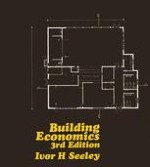
1983 | OriginalPaper | Buchkapitel
The Concept of Cost Control
verfasst von : Ivor H. Seeley, BSc, MA, PhD, FRICS, CEng, FICE, FCIOB, FIH
Erschienen in: Building Economics
Verlag: Macmillan Education UK
Enthalten in: Professional Book Archive
Aktivieren Sie unsere intelligente Suche, um passende Fachinhalte oder Patente zu finden.
Wählen Sie Textabschnitte aus um mit Künstlicher Intelligenz passenden Patente zu finden. powered by
Markieren Sie Textabschnitte, um KI-gestützt weitere passende Inhalte zu finden. powered by
Cost control aims at ensuring that resources are used to the best advantage. In these days of ever-increasing costs the majority of promoters of building work are insisting on projects being designed and executed to give maximum value for money. Hence, quantity surveyors are employed to an increasing extent during the design stage to advise architects on the probable cost implications of their design decisions. As buildings become more complex and building clients more exacting in their requirements, so it becomes necessary to improve and refine the cost control tools. Rising prices, restrictions on the use of capital and high interest rates have caused building clients to demand that their professional advisers should accept cost as an element in design, and that they should ensure suitably balanced costs throughout all parts of the building, as well as an accurately forecast overall cost. The report of the Special (Future of the Profession) Committee of the Royal Institution of Chartered Surveyors1 describes how many building clients now adopt cost limits for projects and are instrumental in spreading an awareness of efficiency and value for money in building; and this presages greater use of the quantity surveyor in establishing cost targets, in the appraisal of alternative solutions, and in cost control as a continuous process. This theme was reiterated in the SITE Report,2 which defines the role of the quantity surveyor as ensuring that the resources of the construction industry are used efficiently to serve the best interests of society.